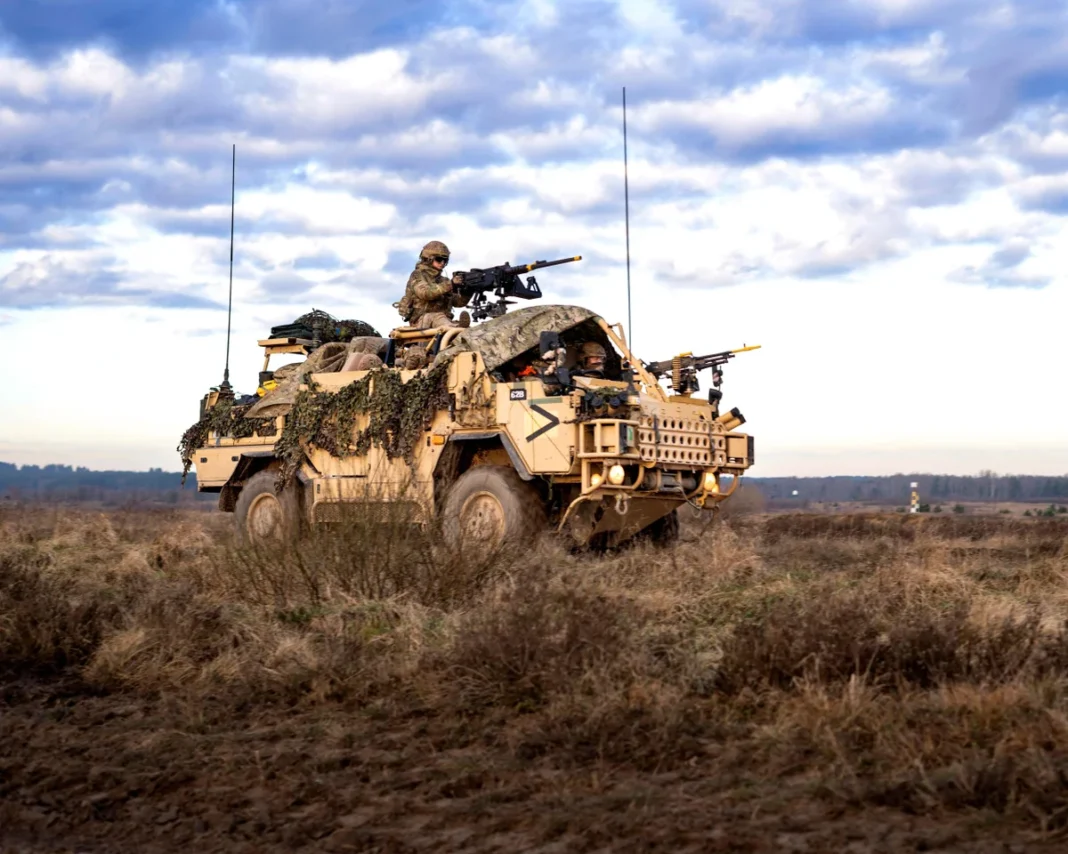The UK War-Fighting Readiness Plan will overhaul Britain’s defence capabilities to prepare for growing threats from hostile states. Defence Secretary John Healey revealed the initiative in Parliament on Monday. It includes advanced technologies, increased troop numbers, and new defence infrastructure.
Moreover, the UK War-Fighting Readiness Plan has committed to all 62 recommendations in the new Strategic Defence Review. These include constructing 12 nuclear-powered submarines and six modern munitions factories. Officials aim to make the British Army “10 times more lethal.”
Healey emphasized that the UK must respond to a “new era of threats,” which includes elements covered by the readiness plan. These threats come from nuclear states like Russia and China, alongside cyberattacks and espionage. He said adversaries now work in alliances, requiring Britain to adapt its strategy fast.
To respond effectively, the government plans to raise defence spending to 2.5% of GDP by 2027. If commitments for submarines are to succeed, this figure may need to reach 3% by 2034. That would mean nearly £20 billion extra per year under the UK War-Fighting Readiness Plan.
According to the review, Russia poses an “immediate and pressing” danger. China presents a complex, long-term challenge due to its cyber capabilities and nuclear buildup. The report also names Iran and North Korea as regional threats that disrupt global stability in the context of the UK War-Fighting Readiness Plan.
In response, the UK War-Fighting Readiness Plan includes over £15 billion for new nuclear warheads. Another £1.5 billion will fund six new factories for constant munitions production. These investments aim to support domestic manufacturing and reduce reliance on foreign arms.
The Ministry of Defence will build 7,000 new long-range weapons. These developments are aligned with the UK War-Fighting Readiness Plan, including missiles and drones for the UK’s armed forces. Moreover, the Army’s size will grow from 74,400 to at least 76,000 full-time personnel after the next election.
The plan also outlines the development of a “cyber and electromagnetic command.” This unit will strengthen Britain’s digital defence and cyberattack response as part of the war-fighting readiness initiative. The government will also invest £1 billion to speed up targeting information delivery to soldiers.
To boost morale and readiness within the UK War-Fighting Readiness Plan framework, £1.5 billion will go toward repairing military housing. Cadet programs will expand by 30% by 2030. A “military gap year” will also launch, allowing young people to explore careers in the armed forces.
Prime Minister Sir Keir Starmer launched the plan at BAE Systems in Glasgow. He described it as a move to make Britain “battle-ready and armour-clad.” He said strength, not uncertainty, is the key to deterring future conflicts.
Still, opposition parties voiced concerns. Conservative James Cartlidge said the strategy was “underwhelming” without solid funding guarantees. Lib Dem Helen Maguire echoed that long-term risks need long-term investment. She demanded clarity on how the plan, particularly the war-fighting readiness element, will be financed.
Despite criticism, the UK War-Fighting Readiness Plan marks a decisive shift in national defence policy. By investing in technology, personnel, and domestic capability, the UK aims to ensure it can meet future threats head-on.
For more political updates, visit London Pulse News.


